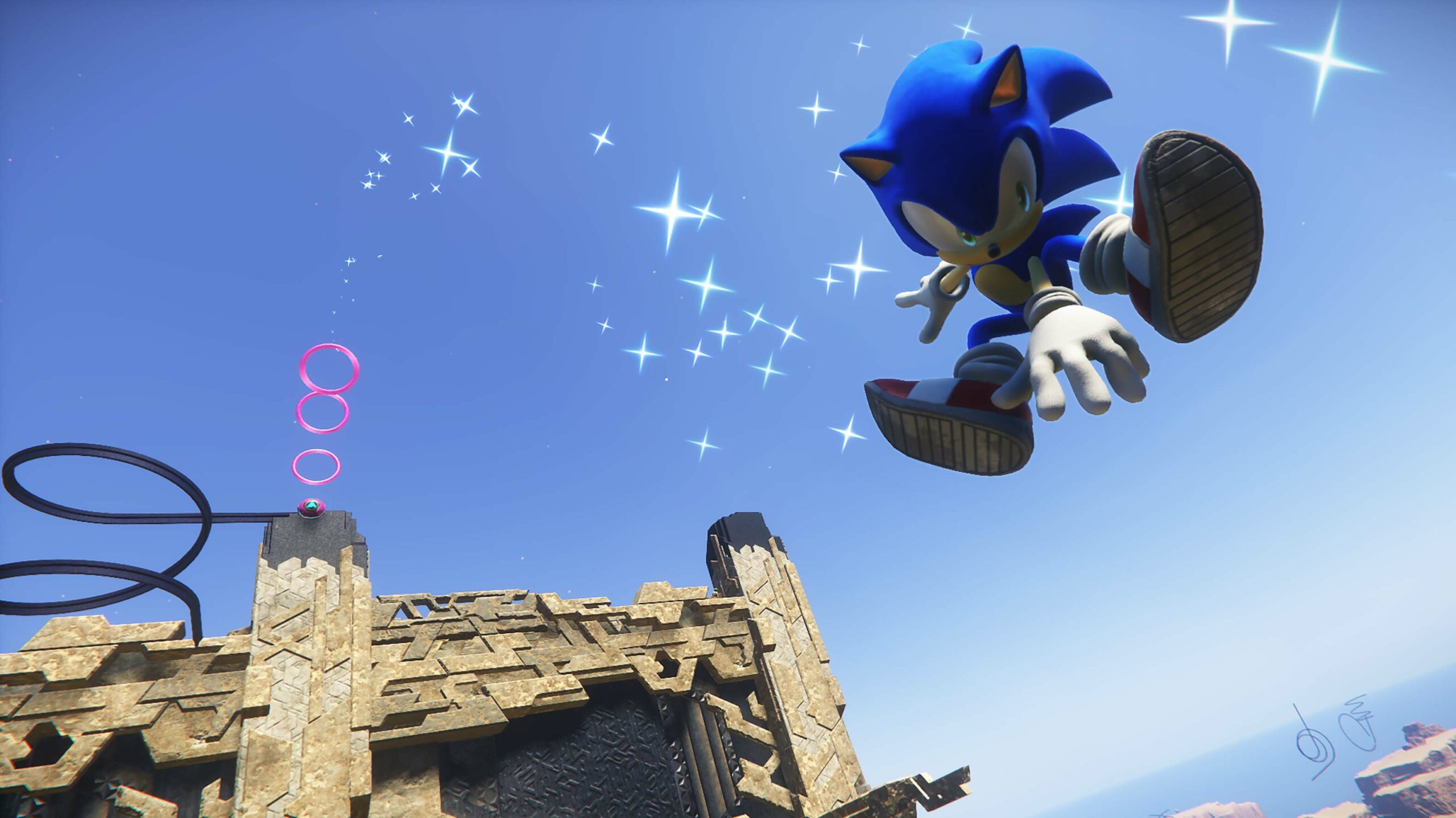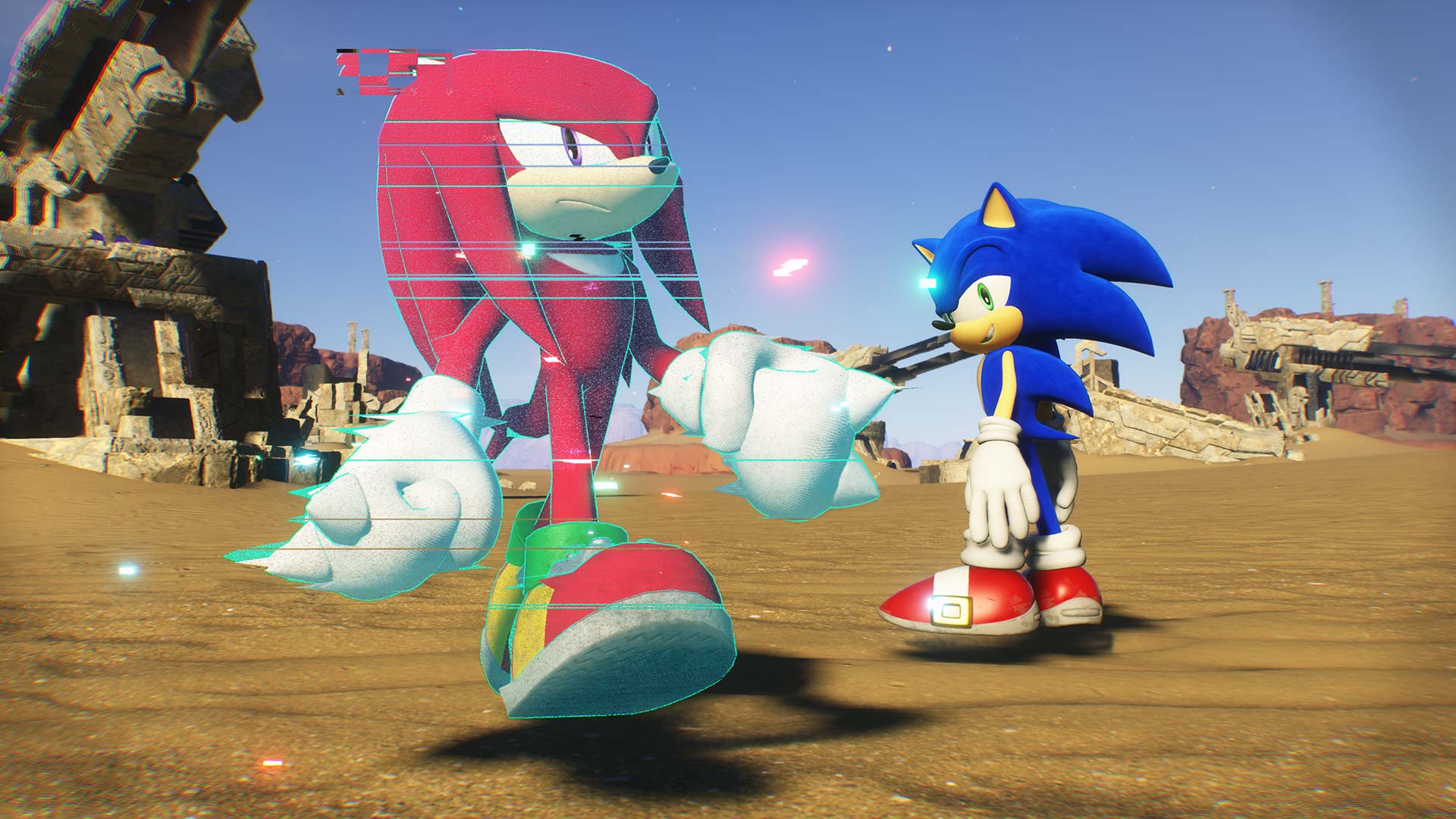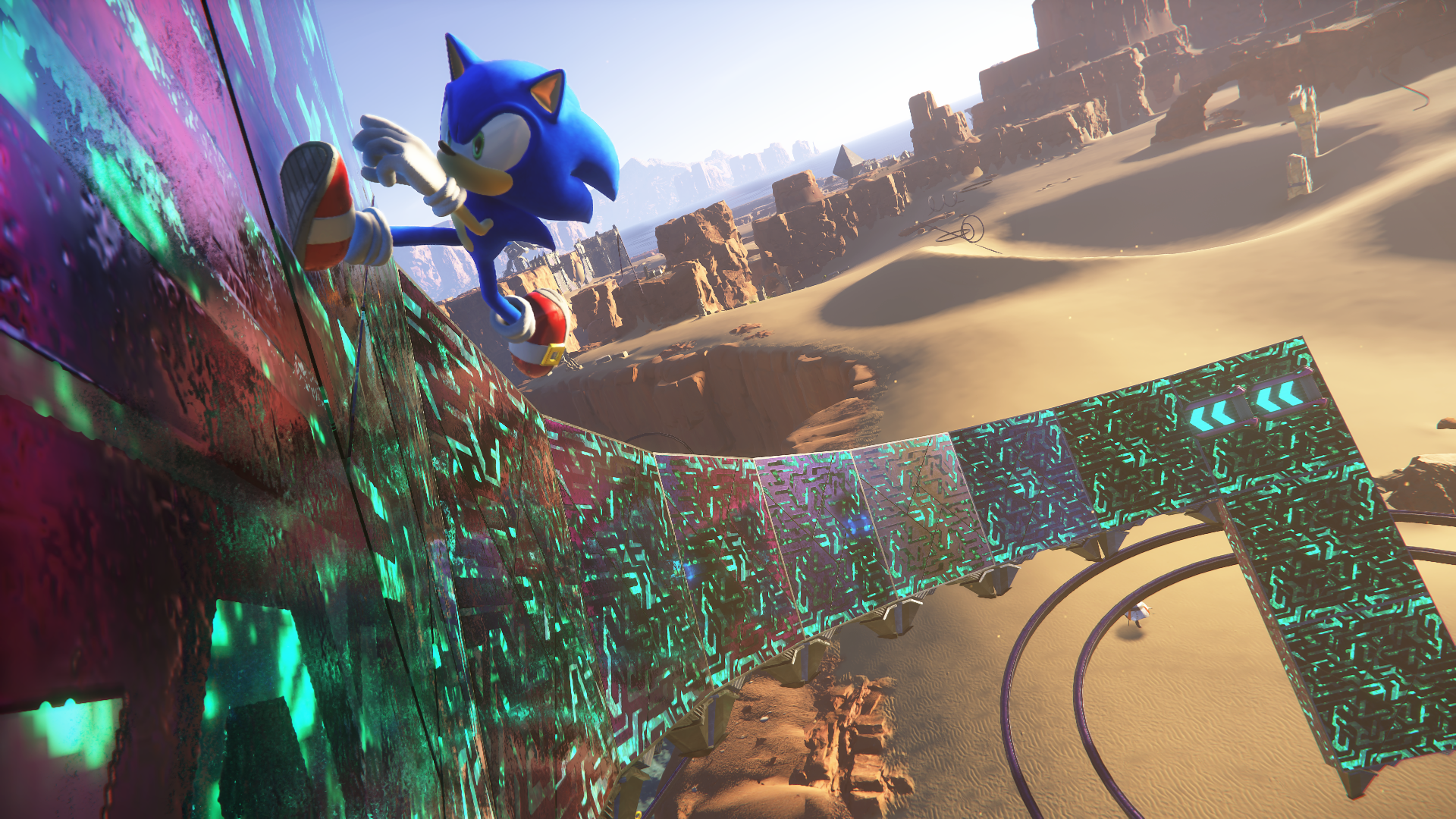
The date is November 4th, 2011.
It’s the lead-up to the weekend, meaning that my mom would pick up my brother and me from school in Toronto and drive back over to Brampton.
This particular week was quite special, however, as Sonic Generations released on Tuesday and my anticipation for the game was immense. I still remember endlessly playing the demo on PlayStation 3 leading up to its release.
As a middle-school student, I did not have a lot of money to spend or even ask for, but my mother made an exception for this game.
If I were to trap those memories into a time capsule, it would contain all the ridiculous hours consuming Sonic Generations. If I wasn’t playing through the game, I was watching two of my favourite content creators Somecallmejohnny (a person who was one of my inspirations for creative writing) and ClementJ642 duking it out in the leaderboards.
I could go on about how Sonic the Hedgehog has both directly and indirectly influenced my life, specifically the 3D games because those are what I grew up with.
It’s also the reason why I remained cautiously optimistic with Sonic Frontiers until launch, because I wanted the game to be good since primary Sonic developer Sonic Team’s reputation is pretty rocky.
Not to say that the recent games were outright terrible, but Sonic Team lost my trust with Sonic Forces. It was tonally ridiculous (World War 3 in the Sonic universe does not work), the level design was flat and classic Sonic felt (pardon the pun) forced into the game because they were playing the nostalgia-bait card again.
It didn’t help that Sonic Frontiers’ marketing was not great at the start. All we saw was Sonic interacting with a lifeless, bleak-looking world without any signs of the traditional levels or Sonic’s banter with his friends.
Thankfully, not only did the marketing greatly improve but so did my own general feelings. As I played through the first couple of hours, it felt like I was back in my pre-teenager self eating Frosted Flakes and playing video games in front of the TV.
PEAK SONIC FRONTIERS pic.twitter.com/T9O4tL8UF4
— Infinito Sem fim (@FimInfinito) November 9, 2022
Live and Learn from your past
I’m a firm believer that instead of forgetting the past, we should embrace and learn from our mistakes, even if we fail to learn the first time.
Because of this mindset, I think it’s fair to look back at Sonic Team’s track record at storytelling and gameplay mechanics. Before Sonic fans click off this review, I’m not going to mention Sonic ’06 or Sonic Boom: Rise of Lyric.
Instead, I want to comment on Sonic Colors, Forces, Lost World and even Generations, as I feel these games highlight Sonic Team’s lack of direction with developing new characters and characterizing pre-existing ones.
One character that really showcases this issue is none other than Sonic’s sidekick Miles “Tails” Prower. Throughout the aforementioned games, Tails’ development is both confusing and inconsistent. For example, Sonic Colors does a great job of showing how useful he is as Sonic’s partner, as he’s cunning and witty. Then Lost World’s story has him getting angry at Sonic for not trusting his intelligence (for no good reason) and working with Eggman to stop the Deadly Six. Talk about mood whiplash.
However, the biggest crime comes from Sonic Forces as Tails, the person who stood up to Eggman when he was about to blow up Station Square in Sonic Adventure and fights multiple powerful versions of Chaos, becomes scared of the base form of Chaos and cries for Sonic.
Tails, while timid in his own right, is a character that does stand up for himself, even if the situation is quite scary. While he’s not as direct in handling situations like Sonic, he makes up for it with mechanical skills and intelligence. Sonic Forces essentially killed his character, making him one of many characters that I felt previous Sonic writers never really understood.
 However, instead of disregarding the previous games, Sonic Frontiers actually embraces these flaws and weaves them into the storytelling. For example, Tails actually comes to terms with his problems about co-dependency on Sonic and, specifically, references plot details from Forces. Not only that, but there are so many references to the older games (including the classics) that had me constantly grinning during my playthrough.
However, instead of disregarding the previous games, Sonic Frontiers actually embraces these flaws and weaves them into the storytelling. For example, Tails actually comes to terms with his problems about co-dependency on Sonic and, specifically, references plot details from Forces. Not only that, but there are so many references to the older games (including the classics) that had me constantly grinning during my playthrough.
For the first time in over a decade, I felt these characters had a clear sense of direction that was actually written by a Sonic fan. This is in special part to the involvement of Ian Flynn, the lead writer for Sonic IDW comics that have been well received for a long time. While the overall story did have some issues, I loved the characterization and I’m eager to see how this writing carries over to the next game.
Finding your own flame
Takashi Iizuka, the head of Sonic Team, coined the phrase ‘open-zone’ to describe the gameplay for Sonic Frontiers. While it sounds like techno-babble (Apple’s ‘dynamic island’ springs to mind), it really does describe the gameplay quite well.
Sonic Frontiers is not an open-world; rather it’s filled with bigger sandbox levels that have various obstacles and puzzles to explore. Though these worlds lack any real presence besides Sonic’s friends and the Kocos (adorable stones used to enhance Sonic), that’s not really essential for this game’s setting.
Instead, it’s about the joy of travelling around the islands. This is only further highlighted as you complete more puzzles and open up new routes to run quickly between areas. The more you play and complete challenges, the more these islands feel like traditional Sonic stages.

I especially loved experiencing the freedom of running around the world without the constraints of sticking to one specific path imposed by the past Sonic games. There was also a sense of reward when you had to figure out how to travel from one place to another without the game explicitly pointing out how you needed to go. This type of exploration is also encouraged because of the various collectibles that are scattered across the map that you need in order to progress the story. These include vault keys, memory tokens, portal gears and purple coins.
While these may sound tedious, especially for a Sonic game, I didn’t find it to be a nuisance. That’s because you can acquire all these items alternatively through Big the Cat’s fishing mini-game, a fun distraction with lots of useful rewards. It also helps that Sonic himself controls quite well, with the added feature of customizing exactly how you want him to play. This includes movement speed, jump height and more, making this the most accessible Sonic game (control-wise) to date.
Another addition to the overall gameplay is the revamped combat system. Since Sonic Frontiers reintroduces enemies with health bars, the blue hedgehog decided to take some fighting lessons from the Devil May Cry series. Sonic can perform parries, initiate combos and even has a skill tree to upgrade moves, though it’s really simplistic. The combat system is not fully realized, but it was quite enjoyable to fight different mini-bosses and even opened up some different combat strategies.
However, there’s more than the open-zone gameplay in Sonic Frontiers — you also have the cyber space levels. These are bite-sized platforming levels using the ‘boost’ formula, where the player has to quickly traverse through the stage while reacting to various obstacles at high speeds. They also contain four challenges that include reaching the goal, clearing with a S rank time, collecting all the red rings and finishing the level with a certain amount of rings. While I was concerned about this approach because of Sonic Forces’ shorter stages, these provide a great burst of challenge without overstaying their welcome.
Not exactly all fist bumps
However, while the cyberspace levels provide a lot of fun, they also bring up most of the issues I have with Sonic Frontiers.
For starters, there are over 28 levels but Sonic Team reuses the same four aesthetics present in Sonic Generations. It’s still baffling that we can’t move past Green Hill Zone and Chemical Plant is starting to become an eyesore. Unfortunately, this laziness is also present in the level design because most are a copy-and-paste job from previous 3D games. It’s a double-edged sword because it makes the stages fun to play through at the cost of unoriginality. However, if you’re not familiar with the older games, this probably won’t be an issue.
What is a universal problem is how Sonic controls in these stages. While I have a lot of praise when it comes to the open-zone gameplay, those controls don’t necessarily translate well to cyber space levels. Specifically, I found that basic 2D platforming was incredibly awkward for precise jumps, though there are some 3D stages that highlighted issues regarding sharp turns and double-jumping.
Outside of the cyber space levels, I can’t ignore the multiple graphical issues during the open-zone islands. There are numerous issues with objects popping in, textures looking right out of an early PS2 title and some cutscenes feeling hollow and unfinished. However, if the world can accept Pokémon Violet and Scarlet’s horribly poor performance, which is worse than anything you see in Sonic Frontiers, then these graphical issues are comparatively quite minor.
Undefeatable in Certified Hits
There are some guarantees in life: death, taxes and Sonic games having phenomenal soundtracks, and Sonic Frontiers is no exception.
In fact, it’s one of the best since Sonic ’06, with so many varied tracks ranging from peaceful and atmospheric to high-energy EDM and metalcore. Long-time series composer Tomoya Ohtani has dabbled through different genres before (with some being hit-or-miss), but he’s finally perfected it here.
I can’t quite describe the levels of euphoria I felt when I first heard “Undefeatable,” the first Super Sonic titan theme, but the joy was very similar to listening to hearing veteran Sonic composer Crush 40’s final boss songs.
Endless Possibilities
Overall, what Sonic Frontiers has achieved is a reminder that Sonic Team can be successful when ambitious.
Many people see this game as the hedgehog’s revival or that “he’s back” to being a video game mascot. While it’s not inaccurate to say (Sonic Frontiers currently has an 82 percent user score on Metacritic and is being received overwhelmingly positive on Steam), I honestly feel like he’s never left. We’ve had other entries such as Sonic Mania, Lost World and even the 3DS Sonic Boom titles that delivered a good experience.
Instead, it’s more like Sonic has his own Metal Gear Rising: Revengeance moment, pulling no punches and embracing the attitude that made him a lasting icon for over 30 years.
Sonic Frontiers isn’t perfect, but it’s a giant leap in the right direction as Sonic Team has finally made the right evolution to the hedgehog’s core gameplay. Most importantly, it was the most fun I’ve had with Sonic outside of the Adventure games and Generations.
New modes, new Koco, new…playable characters!? More Sonic Frontiers content coming your way next year! pic.twitter.com/MoZ8Gtj4Ro
— Sonic the Hedgehog (@sonic_hedgehog) November 30, 2022
To my surprise, they’re also continuing to support Sonic Frontiers with free DLC next year, introducing new challenge modes, small quality-of-life improvements and playable characters (a feature Sonic Team has avoided since Sonic ’06).
With all the positive press and continuing support, my hope is that Sonic Team uses this game to deliver an even better experience. This time, I’m quite hopeful that they will keep their promise.
Sonic Frontiers is available on the PlayStation 4, PlayStation 5, Xbox One, Xbox Series X/S (review on Series S), Switch and PC via Steam for $79.
MobileSyrup utilizes affiliate partnerships. These partnerships do not influence our editorial content, though we may earn a commission on purchases made via these links that helps fund the journalism provided free on our website.
Image credit: Sega
MobileSyrup may earn a commission from purchases made via our links, which helps fund the journalism we provide free on our website. These links do not influence our editorial content. Support us here.


